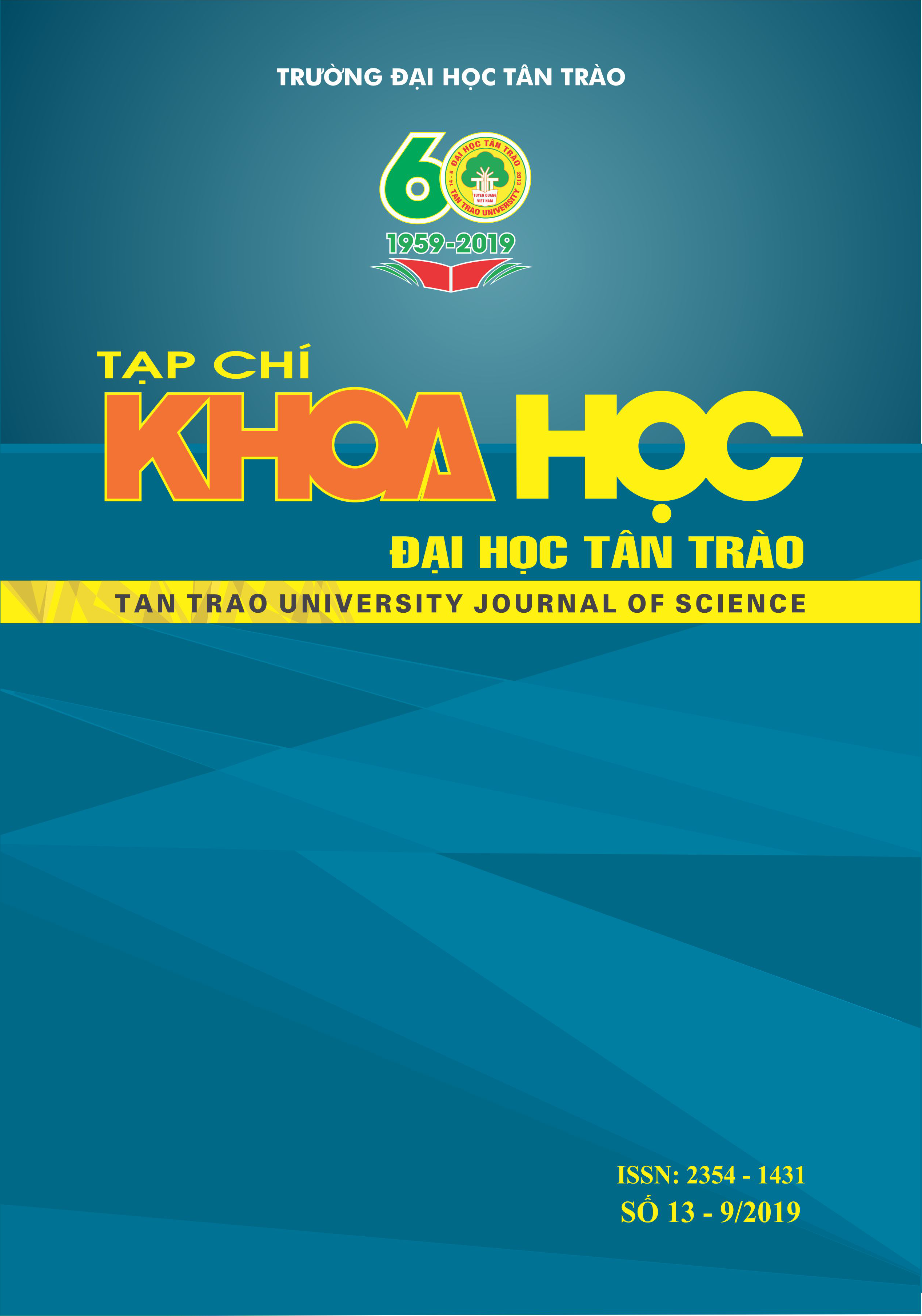Tập quán ăn uống trong lễ cưới của tộc người sán chí ở thôn Đồng Tâm, xã Tức Tranh, huyện Phú Lương, tỉnh Thái Nguyên
DOI:
https://doi.org/10.51453/2354-1431/2019/306Từ khóa:
Táºp quán, ẩm thá»±c, Sán ChÃ, Äồng Tâm, Phú LÆ°Æ¡ngTóm tắt
Thôn Đồng Tâm, xã Tức Trnah, huyện Phú Lương, tỉnh Thái Nguyên là một trong những nơi tập trung cư trú của người Sán Chí. Tại đây, người Sán Chí giữ được nhiều nét văn hóa truyền thống, trong đó có văn hóa ẩm thực. Tuy nhiên, họ cũng phải đối mặt mới nhiều biến đổi do tác động của thời đại, quá trình cộng cư với các tộc người khác. Khi nghiên cứu về văn hóa ẩm thực của người Sán Chí ở Đồng Tâm, chúng tôi đặc biệt quan tâm tới tập quán ăn uống trong lễ cưới của họ. Bài viết làm rõ về nguồn nguyên liệu, cách chế biến, cách trang trí và thưởng thức đồ ăn uống, nghi thức và nghi lễ, đặc sản của người Sán Chí ở Đồng Tâm trong lễ cưới. Nghiên cứu tập quán ăn uống trong lễ cưới sẽ cho chúng ta thấy được đặc trưng văn hóa của người Sán Chí, từ đó giúp chúng ta thấy được giá trị văn hóa cần phát huy trong đời sốngđương đại, đồng thời chỉ ra những mặt còn hạn chế cần phải có giải pháp để khắc phục
Tải xuống
Tài liệu tham khảo
1. Lan Anh (2016), Xóm Đồng Tâm đón nhận làng nghề chè truyền thống, phuluong.thainguyen.gov.vn/-/xom-ong-tam-on-nhan-lang-nghe-che-truyen-thong (11/04/2018).
2. Hoàng Quốc Bảo (2013), Đời sống văn hóa của người Sán Chay ở huyện Định Hóa tỉnh Thái Nguyên (1986-2010), Trường Đại Học Sư Phạm Thái Nguyên, Trung tâm Học Liệu - Đại Học Thái Nguyên.
3. Khổng Diễn - Trần Bình (2011), Dân tộc Sán Chay ở Việt Nam, Nxb Văn hóa dân tộc, Hà Nội.
4. Nguyễn Thu Minh (2016), Tục cưới hỏi của người Cao Lan - Sán Chí ở Bắc Giang, Nxb Mỹ thuật, Hà Nội.
Tải xuống
Đã Xuất bản
Cách trích dẫn
Số
Chuyên mục
Giấy phép

Tác phẩm này được cấp phép theo Giấy phép Quốc tế Creative Commons Attribution-ShareAlike 4.0 .
Bài báo được xuất bản ở Tạp chí Khoa học Đại học Tân Trào được cấp phép theo giấy phép Ghi công - Chia sẻ tương tự 4.0 Quốc tế (CC BY-SA). Theo đó, các tác giả khác có thể sao chép, chuyển đổi hay phân phối lại các bài báo này với mục đích hợp pháp trên mọi phương tiện, với điều kiện họ trích dẫn tác giả, Tạp chí Khoa học Đại học Tân Trào và đường link đến bản quyền; nêu rõ các thay đổi đã thực hiện và các nghiên cứu đăng lại được tiến hành theo cùng một bản quyền.
Bản quyền bài báo thuộc về các tác giả, không hạn chế số lượng. Tạp chí Khoa học Tân Trào được cấp giấy phép không độc quyền để xuất bản bài báo với tư cách nhà xuất bản nguồn, kèm theo quyền thương mại để in các bài báo cung cấp cho các thư viện và cá nhân.
Mặc dù các điều khoản của giấy phép CC BY-SA không dành cho các tác giả (với tư cách là người giữ bản quyền của bài báo, họ không bị hạn chế về quyền hạn), khi gửi bài tới Tạp chí Khoa học Đại học Tân Trào, tác giả cần đáp ứng quyền của độc giả, và cần cấp quyền cho bên thứ 3 sử dụng bài báo của họ trong phạm vi của giấy phép.






